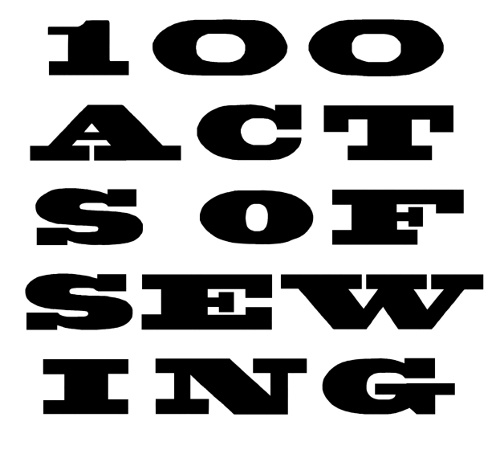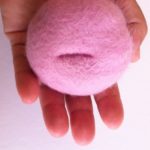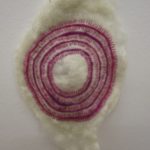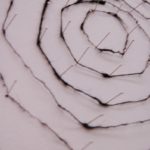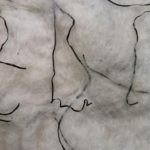As promised earlier today, here is Sonya Philip in conversation with Felicity Ford of Wovember.
Please tell us about you!
F: First of all, would you mind introducing yourself to our Wovember readers?

S: My name is Sonya Philip, I’m an artist and designer living in San Francisco. I work primarily with textiles: knitting, sewing, and felting. About five years ago I started a project called 100 Acts of Sewing where I made and documented one hundred dresses in a year.
Since then, the project expanded to include workshops and patterns, all in the hopes of encouraging other people to sew their own clothes.
How do you use wool?
F: Your rich body of work incorporates a diverse range of textiles: crisp cotton sewing thread for stitch definition in your interventionist ordinary objects series; many different sorts of textiles used throughout 100 acts of sewing; and silk and beeswax used for your sculptural pods… you seem to relish the distinctive associations and properties held by different textiles, and to use them expressively across your work. As this is Wovember, I wonder if we can focus especially on wool, and if you might say a few words about some of the things you have made that utilise its special properties?
S: I think wool is magic. I love the way it feels and that beautiful sheepy smell. Wool, more than other fibers, has this property to transform: from fleece, to roving, to yarn, to felt, it’s truly extraordinary! Much of my work always returned to this love of wool and that translates into exploring the ways in which I can incorporate it as a material. A lot of what I do is about answering the question, I wonder if? Add to that, I’m a bit of a magpie, always having my head turned by a shiny new idea, so I’m continually experimenting.
Wool and the body
F: I love how you used wool as a kind of binder to enable you to make yarn for hair; how you created felted cervixes out of felted wool for the felt cervix project; and how you felted wool against your own body for felt circles. I also love the references to bodily time spent by the sea, gathering up the seaweed that then appears in sea felt.
Could you say something about working with wool in these contexts?
S: All of the ways we turn wool into something else is very tactile. Felt is thought to be one if the earliest man made fabrics. I like how the hand is both present in making each piece and also how the softness itself invites the object to be touched. Textiles are such a big part of our lives and I find it really interesting to juxtapose everyday materials in unexpected ways.
F: Has investigating wool in these bodily projects changed or influenced how you think of it as a textile with which to knit or sew?
S: I think it is all an ongoing way to explore what it is to inhabit a female body, especially one that is not considered ideally beautiful by media standards.

Wool and positive body image
F: I really like the sensations of different sorts of wool on my skin; last year for the KnitBritish breed swatch-a-long, Louise suggested that after swatching with wool from a particular breed of sheep, we should tuck our swatch inside our clothes somewhere to test how the wool felt to wear. This was supposed to be a practical thing but I also enjoyed that tucking these little squares of Southdown and Wensleydale wool into my clothes in the morning added a frisson of important sheep research to my days. Adding a secret, sheepy subtext to my outfits changed how I felt; I was celebrating sheep breeds! I was wearing wool! I was continuing the important Wovember mission in a physical, bodily, specifically outfit-related manner! I feel similarly when I wear the multi-breed cardigan I designed a few years ago – Layter. To put it simply, I feel like me when I am wearing wool.
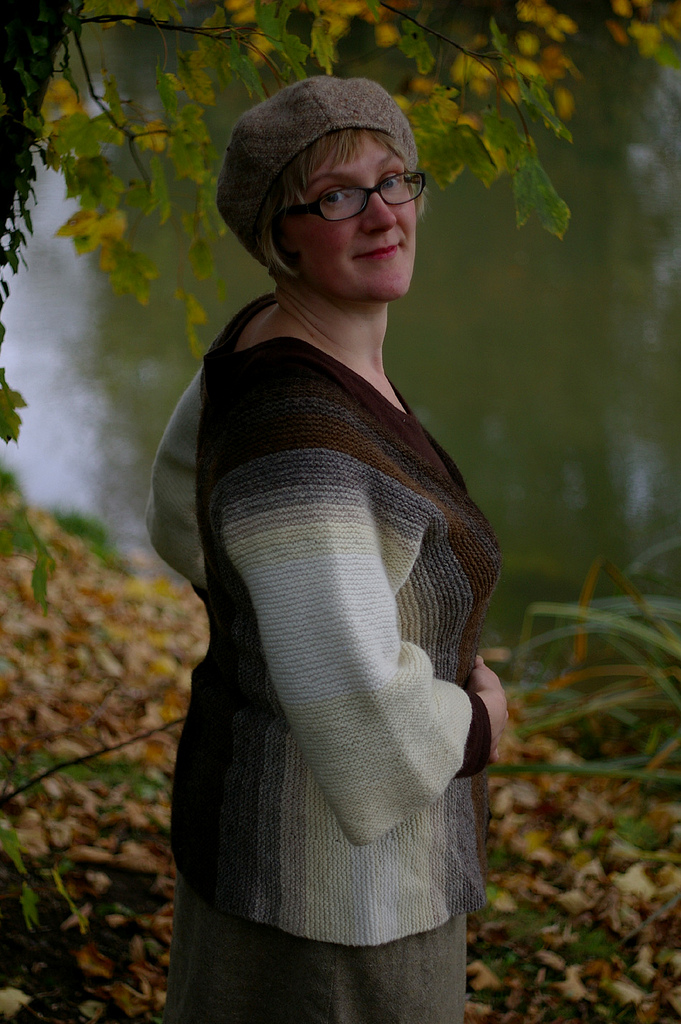
I wonder if you can relate to this with your 100 acts of sewing project, and to the idea that embodying our politics in our outfits can have positive benefits in terms of self or body image?
S: Like your jumper, most of us have that special item of clothing that we feel absolutely great wearing. I love how you write ‘feel like me’. Isn’t that what all of us really want? To wear clothes that express our authentic selves? I had a linen dress I bought from a charity shop and it was really what started 100 Acts of Sewing. I loved wearing it and my dream was to make one for practically every day of the week.

I’ve talked about creating a uniform as a way of taking out all the indecision about what to wear each day. Since I’ve started making my clothes I no longer worry about clothes or stress that I have nothing to wear. My wardrobe might be uniform in the stylistic elements, but since those building blocks are taken care of, I can then be free to have fun with the patterns and colours. How women are commodified by fashion is hopelessly narrow. Dressing for yourself? Not to express status or seduce? In this way, the liberation and the fun are subversive.
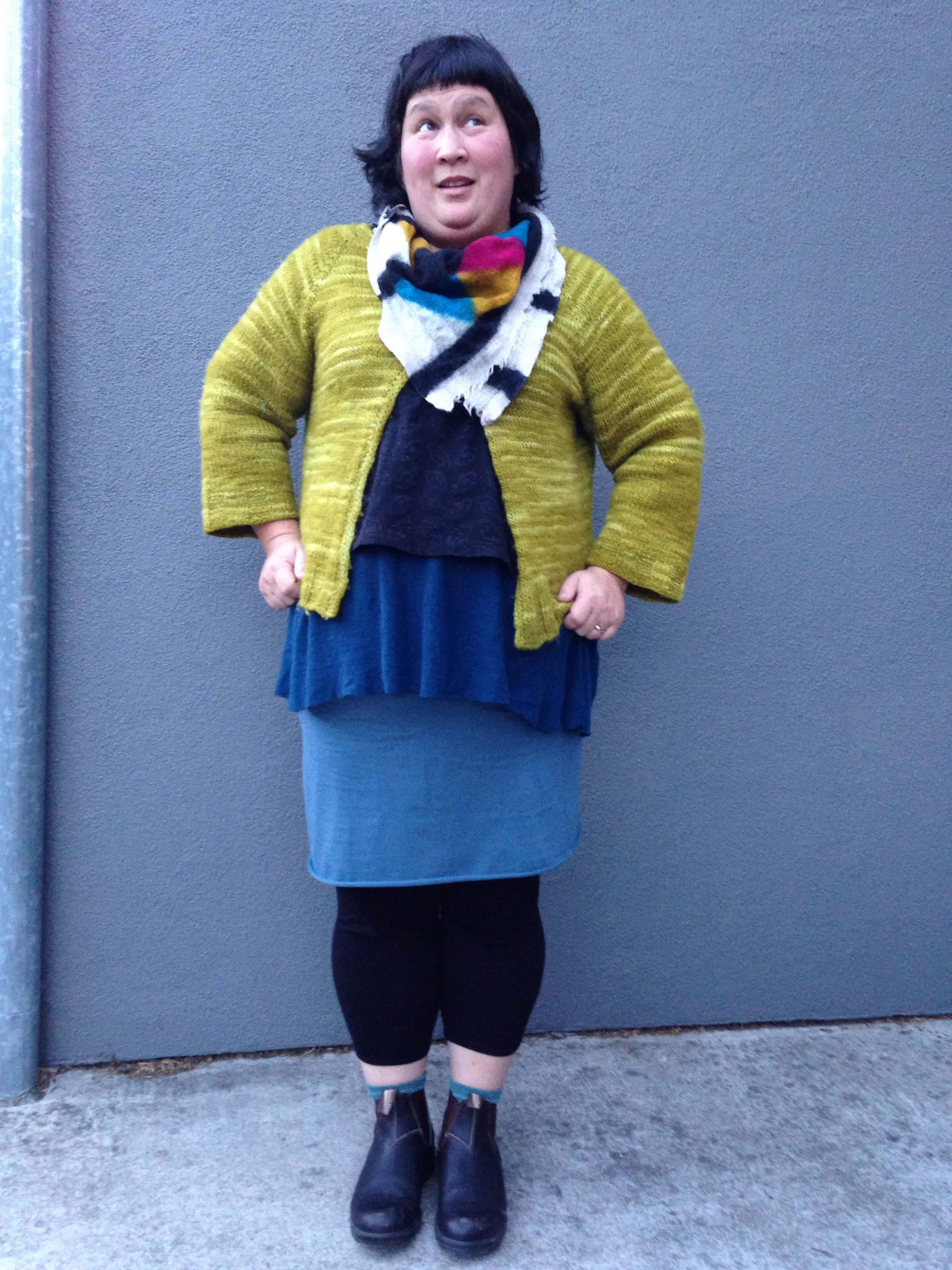
Reclaiming the body through thoughtful acts of making
F: With Wovember we are keen to highlight and reveal the often-invisible labour that goes into producing woollen textiles. We celebrate wool and the people and animals that produce it, and aim to raise awareness about the skills required to bring it into being. I’ve found that familiarising myself with wool and its supply chain has radically changed how I feel about buying brand new clothes from the high street – particularly those that are marketed as wool and are in fact made 100% from acrylic. I feel that marketing non-woollen goods as wool only succeeds as a corporate strategy because of the profound disconnections that exist between producers and consumers of wool. We are focusing obviously on the ones surrounding wool, but there are many other disconnects along the supply chain of fashion; I feel that your projects – especially in your wonderful clothes-making workshops and your enormously empowering dress-making patterns – you aim to address disconnection in a different and related way. Could you talk a little bit about that… about making garments as a source of confidence, empowerment and connection?
S: The companies selling new clothes directly benefit from a disconnected consumer. If a person knows what they want to wear and demands only that, how could they be convinced to buy? Making my clothes is a way to create something I wasn’t able to easily find. Since I know how much work and time was put into each garment, I am more invested in the care and upkeep. If there is something I don’t like about it, I can change it by moving a pocket, changing the hem or shortening the sleeves.
Instead of searching and making do with things that are almost but not quite what you were looking for, you could create clothes that were comfortable, colourful and expressing your own personal style. That the skill and creativity used to make the clothes is your own – that is where feelings of empowerment and confidence come from.
Wool in your wardrobe?
F: I love your style on Instagram so much and how your outfits, made by you, shine with personality and colour. You inspire me so much with your accessible making projects, and I can confirm that dress pattern no. 3 works very well in a 100% lightweight wool fabric! I wonder if you could reflect on the role that your woolly handknits play as key elements within your handmade wardrobe?
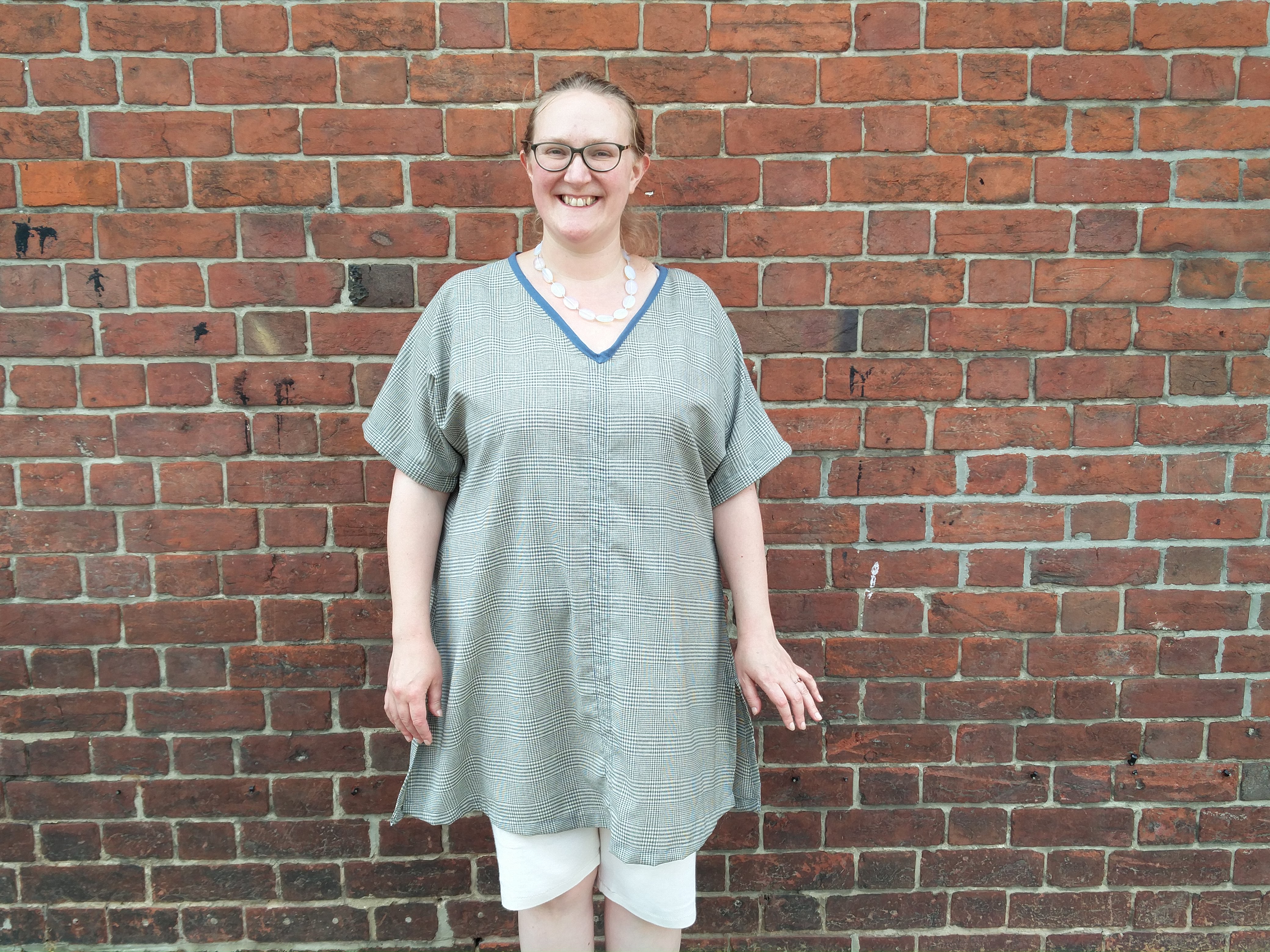
S: I firmly believe that sewing and knitting are the very best bedfellows. The two crafts really compliment each other on the level of labor. With sewing, a garment can come together relatively quickly. I like to work in batches, cutting out several projects one day and then sewing them the next. But sewing requires space and ideally, a block of uninterrupted time. Both of these things are often in short supply. Then you have knitting, where you are actually creating the fabric and it proceeds at a comparatively glacial pace. However, I can usually bring my knitting project with me or get several rows done in the evening while watching television. As for what I wear, my handknits play a major role. I love to wear cardigans and shawls, the sewing in many ways acts as a way to fill in the blanks around those two elements.

From the farm to the yarn and from the yarn back to the farm…
F: I saw a most beautiful photo of you on Instagram with a lamb earlier this year. In my case, meeting sheep farmers and sheep was a starting point for wanting to make more of my own clothes. Now I am trying to learn skills that will enable me to do that and to utilise the wondrous stuff that is growing in this land in which I live. I wondered if yours has been a similar path, or whether your curiosity and love for the materials with which you sew and create has eventually drawn you back to the farms from whence they came?
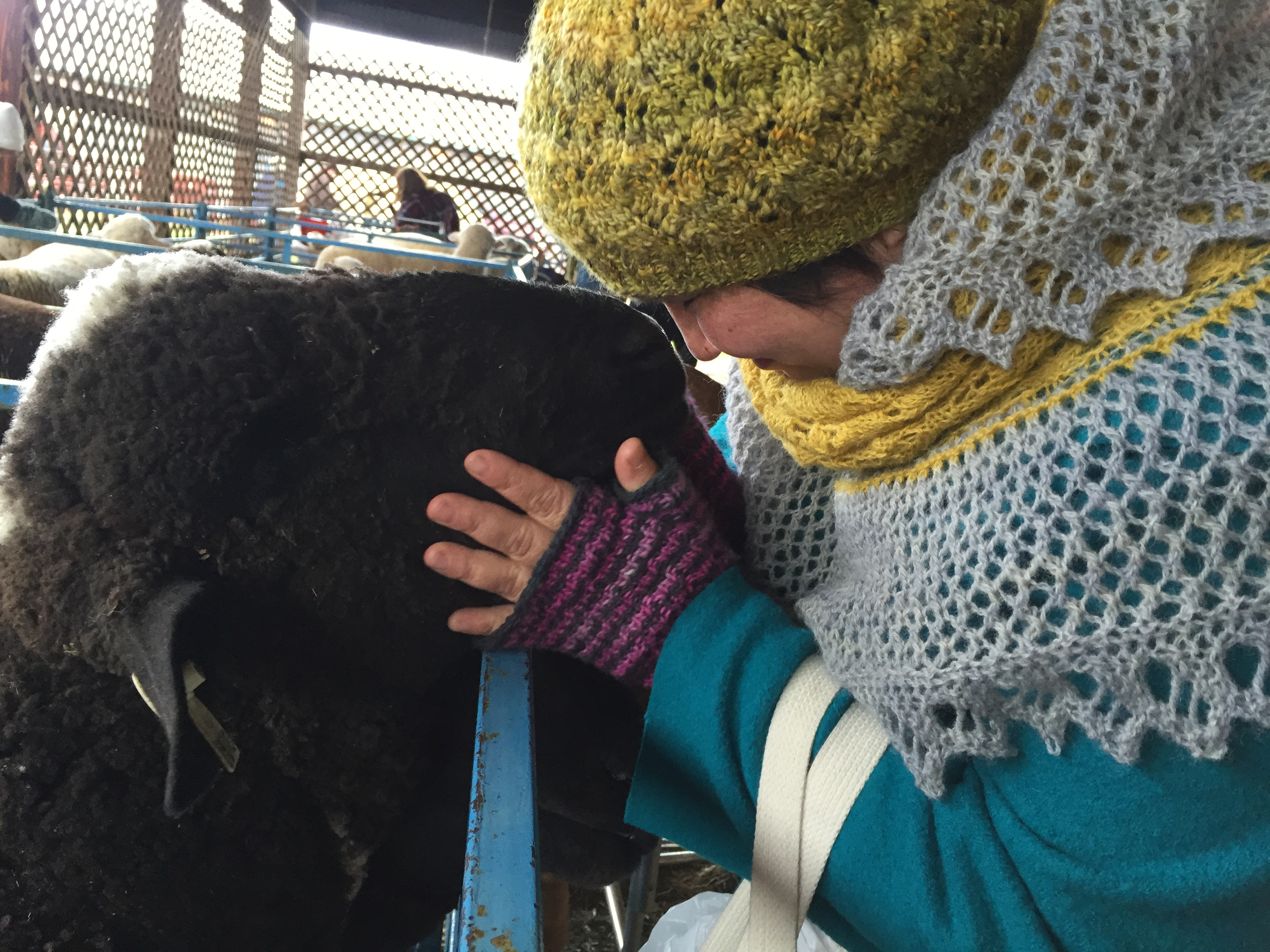
S: I learned to knit while my oldest son was attending a Waldorf School and their emphasis on natural materials greatly influenced me. In those early days as a knitter, I would go to yarn stores and purchase yarn company magazines along with the yarn to knit up the patterns. Wool was this generic catch-all term. Now I’m a more discerning wool buyer and mostly make purchases because of personal connections. I actually have a friend who named a sheep after me and I am really looking forward to one day using the wool! More recently I’m thinking about fabric in a similar lens of supporting makers and local producers. What is also on my mind, is making what I have in the way of fabric go further, in addition to seeking out and supporting domestic textile manufacturing.

Thanks so much to Sonya for taking the time to talk to us and for giving us all so many ideas about how we might express ourselves more authentically in the things that we wear. I hope we can keep the conversation going on Twitter and Instagram using the #woolbodypositive hashtag!

